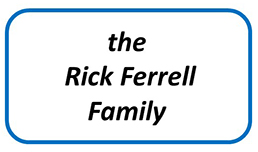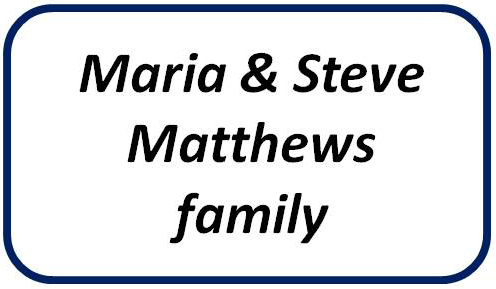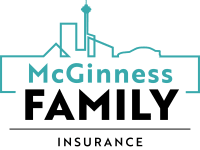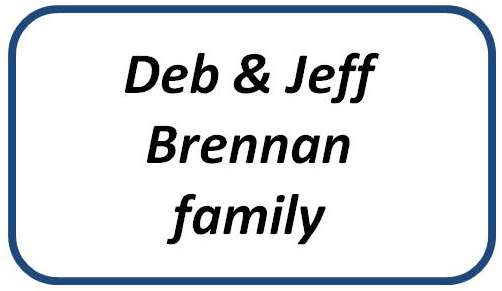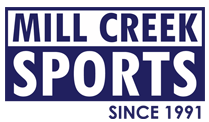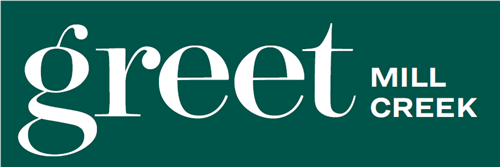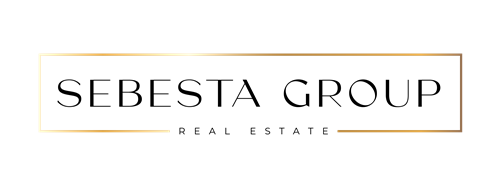A Seed is Planted in 2009
Chila Project

The Rotary Club of Mill Creek supported a young medical student's passion in 2009. His name is Brian Goff Smith. While studying to become doctor at East Tennessee State University, he formed a non-profit organization to help the indigenous population in Guatemala by building a clinic in the village of Chisec, Alta Verapaz, which is located 286km north of Guatemala City. The student Brian Smith is now Dr. Brian Smith, below is his blog. For more information on Brian and the organization form to carry on the work, see http://chilainc.wordpress.com.
2009
We raised $9,500 through fundraisers like our "men of medicine calendar" and donation campaigns. Then we bought land in Guatemala, a pickup truck in Tennessee, filled it with materials and drove through Mexico to Chisec, A.V. Guatemala.
The summer project, phase 1 was a success. We had over 20 volunteers come to Chisec to work for 1-2 weeks at a time. James and May Leinhart stayed the whole summer...our progress was documented in our blog which can be found at: http://chilainc.wordpress.com/
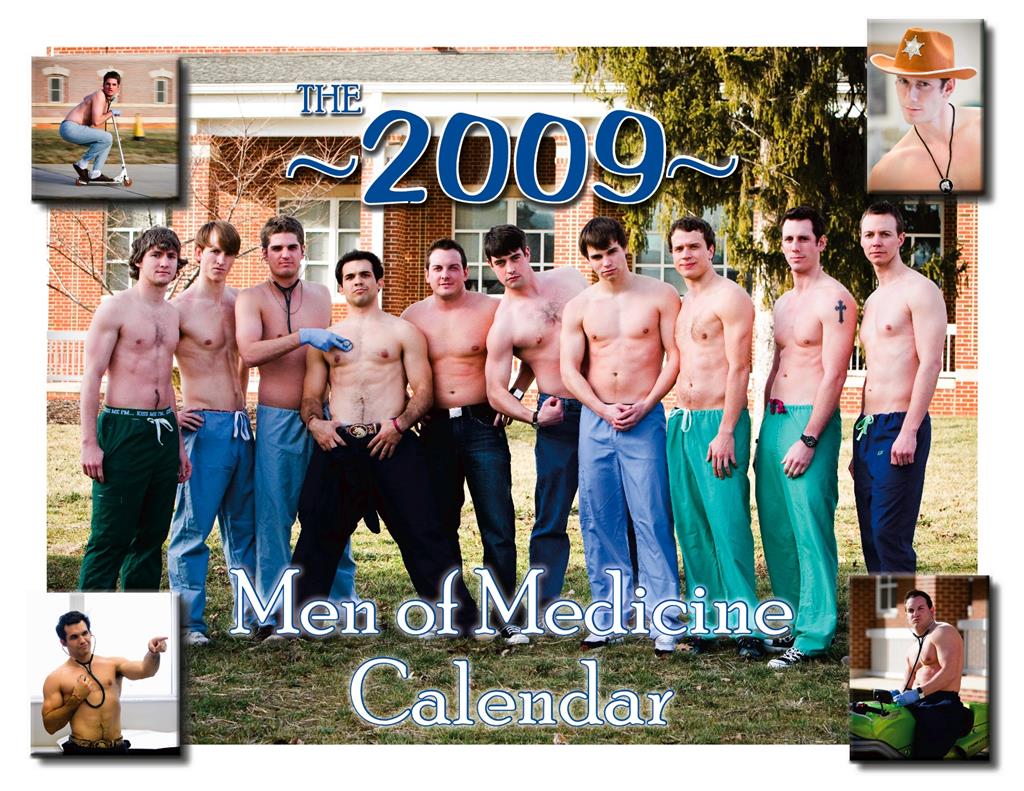
Volunteers from our medical school class and others who had heard about the project from the website and elsewhere traveled to Chisec, Alta Verapaz and constructed our clinic in collaboration with Q'ana Tz'uul Taq'a, a local indigenous women’s group in Chisec, A.V. whose focus and mission is natural/herbal/mayan medicine, maintaining Maya Q'eqchi traditions, vaccinations of household animals....etc....
One day a week, Ricardo, the medicine man who has studied for 40 years about Mayan medicine and plants, comes to give free consult to the people of Chisec...The women pay him the equivalent of 10 dollars for his work per day...
Our clinic will eventually house consultation rooms for us (western medicine) and Ricardo (Mayan medicine)....
We also successfully started a business development project with the women, marketing "Mayan baskets" to be sold sale in larger cities to tourists. The baskets include herbal medicines/shampoos/creams produced by the women’s group, chili powder from another women’s group, and cacao/chocolate from yet another women’s group...
We purchased glass display cases and put the products for sale...
Summer Update: *** We raised $9,500 and constructed most of the basic structure during the summer of 2009....THANK YOU DONORS!!
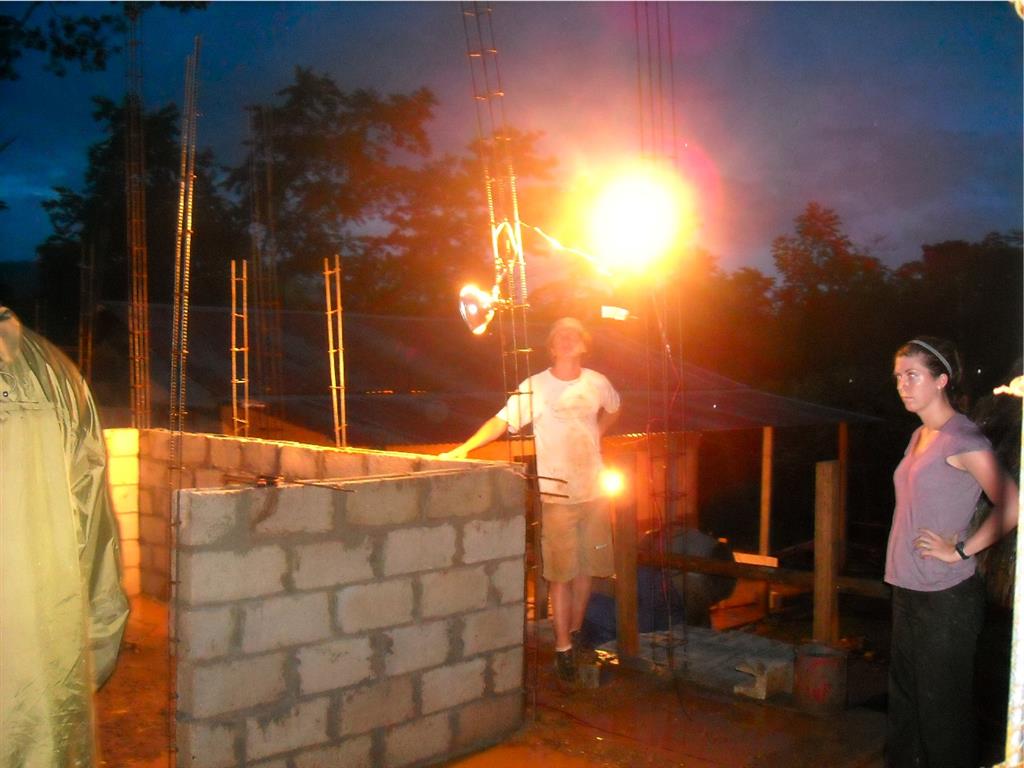
**we still need to pour the floor, install water and electrical facilities, bathrooms, stairs up to the main entrance, and a children’s play area. we plan to travel in December, 2009, to finish construction and need to raise $5000.00 to do so...
*****THE CLINIC SHOULD BE OPEN FOR OUR FIRST MISSION IN SUMMER 2009!!!!!!!!
December 2009
We raised $3,200.00 from a benefit concert, hooded sweatshirt sales, and private donations...
For our December/Christmas trip we finished the cement floor for the clinic, cement stairs, the roof, doors, and windows....we used money from our T-Shirt sales, benefit concert in Johsnon City, TN, and private donations...
For our December/Christmas trip we finished the cement floor for the clinic, cement stairs, the roof, doors, and windows....we used money from our T-Shirt sales, benefit concert in Johsnon City, TN, and private donations...
We also met with the women’s group, Asociacion Q'ana Tz'uul Taq'a and started to hammer out a contract regarding our future...the women expressed that they wanted future help with funding regarding the activities that their mission and vision deem a priority: natural medicine consult with a local Mayan medicine man, production of herbal medicines, farming, family health, and further education in these areas...CHILA inc. signed the contract for 3 months, with a planned re-negotiation in March 2010...We also participated in our annual Santa Claus project where Scott Rowland, a returned Peace Corps Volunteer dresses as Santa Claus with us as his elves...we distribute polaroid pictures of each child with Santa Claus in places like the Coban garbage dump village, and various villages surrounding Chisec....

March 2010
We met with the women’s group and visited their projects in 3 villages...they were incredible! They had sustainable production of household gardens, chickens, and herbal medicines...They appreciated our visits and although this particular trip was not a construction venture, it was a success!
October 2010
We installed more electrical equipment, painted all of the examination rooms and the storage room, stucco'd the walls to smooth them out, and teamed up with Guatemalan artist Rene Dionisio to paint a mural on the front of the clinic....Check it out!!
December 2010
Ma sa la ch’ool!!! (what’s up??!?!). We just got back from our latest trip to Chisec, Guatemala, and thank goodness it was uneventful and we got a lot done.
After a week of working on smoothing out the walls with stucco, and painting the individual clinic rooms and storage room, we had a Guatemalan artist paint a mural on the front of the clinic. Rene Dionisio is his name, and he is an indigenous Tzutujiil (another Mayan language) from Lake Atitlan. He is a great, laid back, perfect-english speaking, Tzuutijiil-Hip-Hop singing guy. Check out his work!!
We’ve also now got a “CHILA” quilt, hand-made by a staff member at our Medical School and a student in our class. We’re currently looking for the best way to sell it/auction it/raffle it to make some money to keep this going.
April 2011
Although it was supposed to end Saturday, we had a great week!! I’m still stuck in Guatemala however…our plane tickets were generous donations from Delta Airlines and they are standby status…so I keep getting bumped!!! Oh well…fingers crossed again tomorrow…We got sinks installed in all 4 clinic rooms, put in fluorescent lighting throughout the clinic, had a wooden carved display made for our CHILA quilt, and provided metal roofing for 18 families who contributed 20 dollars of their own money in order to participate.....great week!
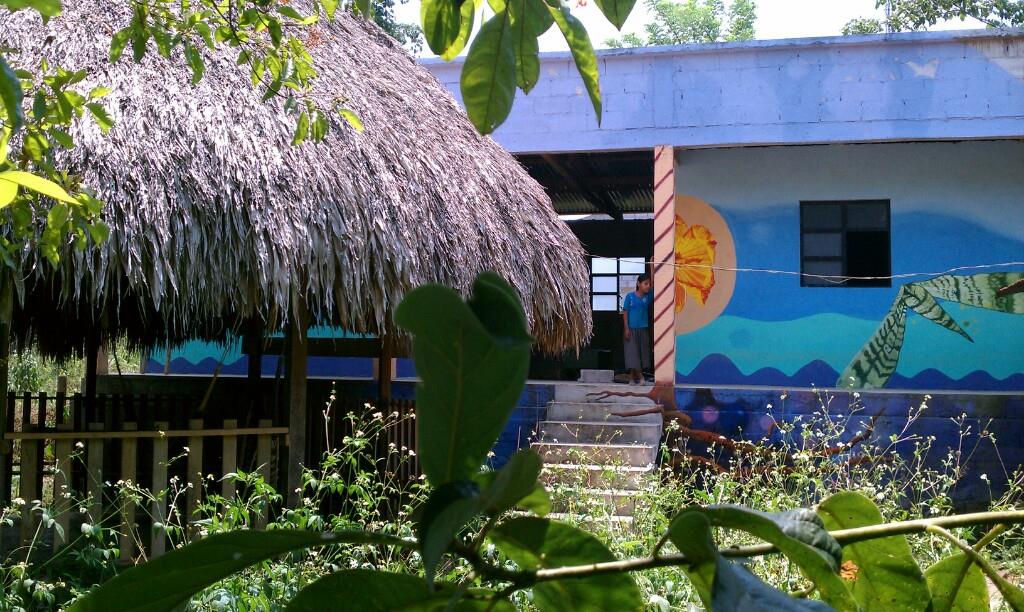
May 2012
One of our most productive and important trips yet! A lot of great milestones for CHILA. Our first day we spent driving out to Quetzaltenango to see the Primeros Pasos Clinic in action. It was amazing. It overwhelmed us a bit, but they've been at it for over 10 years. They have Doctors and nurses on staff, medical students rotating through, a dentist and dental students, and social work students running a healthy schools program. When we were there, a specific village had their day to come to the clinic, be seen by the doctor, then pass through their mandatory healthy schools class. They also have a great lab and pharmacy, which is all included in the price of their consult fee, paid up front.
We then headed to Chisec, where we had a million things going on at once. We met with the women's group, and agreed to help pay Ricardo (the medicine man who has been seeing patients for 5 years at CHILA) his weekly salary. We also talked about the progress of the multitude of the women’s group projects.
We made shelving, exam tables, and wooden sink covers. We had to get good and strong wood in the forest to build a platform for our water system, built it, and got a tank to capture rainwater to sit on it. We built a bannister up our main stairway. We visited schools and met with teachers interested in implementing a healthy schools program. We did a few healthy schools lessons at schools. We met with doctors and nurses that might be interested in working at CHILA a bit here and there.
And finally, we saw our first patients!! While back in the states, I got a call from Chisec a few days later telling me that our patients' problems had cleared up and they were grateful that CHILA would be their doctors for life.
March 2013
One of the topics of discussion on the drive up to Chisec was whether we should put an announcement on the Evangelical radio station in Chisec that we’d be seeing patients. Things can get overwhelming very quickly if you decide to do this, as the radio signal is usually the only form of contact with the outside world that many of the surrounding villages has. Most farmers will have a small radio with them out in the fields, families will have one in their houses (when they can afford batteries), and word gets out quick. We decided to use word-of-mouth instead, as we only had 2 providers to see patients. This turned out to be a good decision. We quickly had a full-house of patients waiting to be seen. Ages ranged from 2 months to 84 years old. 182 patients seen in 2 ½ days of clinic.
We designed triage intake form during breakfast on our first day in Chisec which asked for name, age (although most people aren’t exactly sure how old they are), history, symptoms, etc. This worked well as a start to building our patient database and eventually establish continuity.
Scott, a returned Peace Corps volunteer who served in Chisec took vital signs and recorded the patients' chief complaint by filling out the intake forms. Will, a Tennessee native who built most of the clinic with his bare hands, helped serve as our pharmacist and entertained the children who were around the clinic. Amber, an OBGYN resident (Will's wife) saw patients.
She attended to the women who had specific OBGYN complaints, as well as children and adults. I saw children, adults and women who didn't mind seeing a male provider. We had an English-Spanish translator, and a Q'eqhci-Spanish translator (2 levels of interpreters) for Amber, which surprisingly went very smoothly.
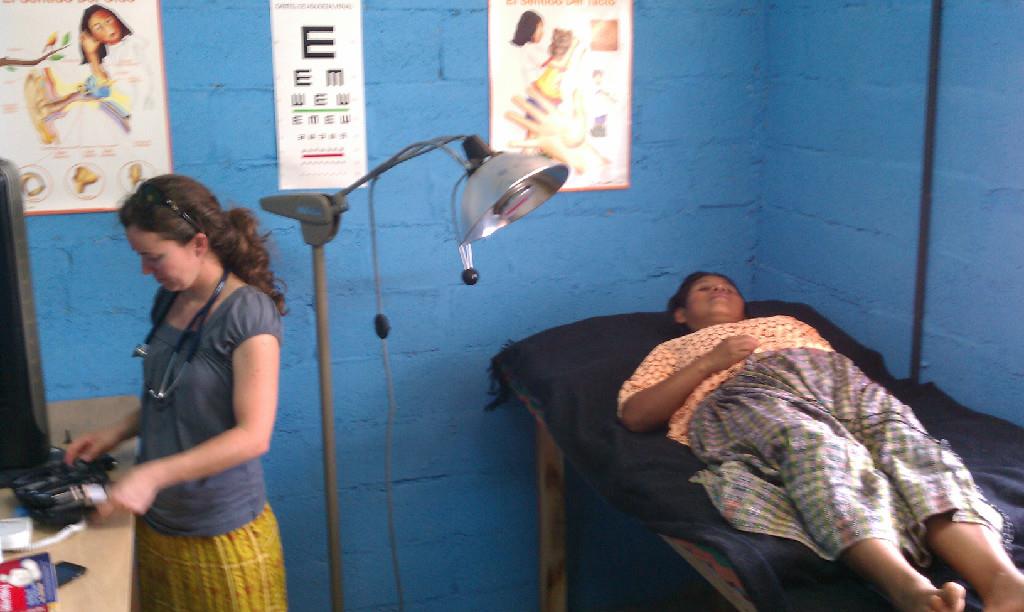
Members of our women's group asked to be seen as patients too, which was great.
One of the first things I noticed was that most everybody had a heart murmur. This was to be expected given that most people had probably suffered from untreated rheumatic fever as children and had developed a murmur they’d most likely have for the rest of their lives. It had never given them a problem. I had a lot of patients with symptoms of Tuberculosis, which again is to be expected. Night sweats, chills, fevers, and blood in their sputum. The fact that they have active TB means most of the people in their household probably has it too. This is definitely going to be a focus of our clinic in the future. I still haven’t really figured out how to go about addressing this huge public health challenge.
Lots of women had UTI symptoms that we could treat. Lots of children had diarrhea, ear infections and cold symptoms that we could treat. We had at least one patient with likely Tuberculosis of the spine. That is going to be difficult to address. I had a woman with Ehlers-Danlos syndrome, a genetic disease that affects collagen (tissue strength). She told us of a surgery she had a few months prior and that afterwards, the stitches ruptured and her incisions opened up. She had failed to tell the surgeon of her disease, and undoubtedly he wouldn’t have operated on her if he had known prior. I had a child who probably had spina-bifida because his mother didn’t have access to adequate nutrition during her pregnancy. One of his legs did not work as well as the other, and we’ll have to follow up with him on subsequent visits. She told us she lived on tortillas, chili powder and coffee during her entire pregnancy. Probably no folic acid to speak of (which helps form the spine during pregnancy and helps guard against birth defects).
We had women with mastitis, an infection of the breasts which we were able to treat. Most everyone had such severe acid reflux that it affects their daily lives. They probably have ulcers secondary to H. Pylori too, which we’ll address in future visits. We treated their symptoms and counseled them extensively on how to minimize reflux in their daily lives. We had a lot of musculoskeletal pain due to the hard manual labor that Q’eqchi people do every day. We cleaned a lot of ears with curettes. The amount of wax we removed was incredible. People couldn’t believe how much better they could hear after we cleaned them out.
Most women deliver their babies at home, and many in Chisec still die during childbirth. It surprised us how many women had shown signs of a complicated delivery, transferred their care to the local health center, and had episiotomies. We rarely see episiotomies in the states now. We had many women who had un-repaired vaginal lacerations that caused them problems after delivery as well.
We had a significant amount of women who had experienced trauma, both emotional and physical, that had never been addressed. We did a lot of listening and some counseling, and hope to have close follow-up in the future. A lot of women also had symptoms they describe as "nervous", which is basically anxiety. We talked a lot about coping mechanisms, stress reduction and helped with some different antithistamines that have been shown to help with symptoms of anxiety. The psychiatric aspect of the indigenous women of Chisec is going to be a huge challenge in the future for us; one where we'll likely need the help of Ricardo, our Q'eqchi shaman who deals with mental health using different cultural approaches. The western medicine model will likely be inadequate and less than ideal in addressing these issues.

We had many signs of vitamin deficiency, both in the adults and the children. This will definitely be a focus of our clinic in the future. Most every patient had warts on their arms and hands. We explained that these were viral, spread by contact, and we were able to treat some of the existing warts with medicine. There were many, many rashes. Pretty straightforward, fungal, allergic and infectious rashes that we could treat. The challenge will be to help the patients avoid re-infection. We had many patients with signs/symptoms of parasitic infection. Children’s parents often described either vomiting or having bowel movements that had visible worms in them. We were able to address these infections too, and counseled on how to avoid future re-infections. These infections also likely contribute to vitamin deficiencies in the children.
Our trip wasn’t perfect, mostly because we are still working on developing a truly sustainable model to keep our clinic open year-round. We still would eventually like to arrive at the model of Primeros Pasos, an amazing clinic in western Guatemala, which has Guatemalan physicians staffing their clinic, dentists, medical students, residents and volunteers that keep things running. We will eventually get there!
Our next step is to have the ability to perform basic labs, ultrasounds, imaging and other tests on-site. I’ll be writing proposals to make this happen between now and our next visit. We also have tremendous public health challenges we’d like to effectively address, namely Tuberculosis, birth control, and avoiding re-infection with the same diseases after we treat the patient. I’ll be working on this in collaboration with my residency program over the next few years. All in all, it was another successful, safe and fulfilling trip. I hope to see you all in the clinic at some point in the future. You all in one way or another helped make this a reality. Thank you!
September 2013
Back to Chisec!!! CHILA is moving along. Still trying to blend Q’eqchi traditions with Western Medicine and having fun doing it.
We’ve got a clinic now and are finally getting to use it! On this trip (October 6-11th), an attending physician from the University of New Mexico will be joining us, in addition to the usual CHILA members: Will (basically built the clinic with his bare hands) and Amber (his wife, also built the clinic and is an OB-GYN resident), Scott (founding member of CHILA and returned Peace Corps volunteer – and can eat a spoonful of ground red chile powder as a party-trick). Megan, the country director from IAHA (Inter-American Health Alliance (www.interamericanhealth.org) is also joining this trip to help assess what additional steps are needed to move things towards the Primeros-Pasos model (www.primerospasos.org).
Ricardo, the Q’eqchi Mayan medicine man, will be seeing patients while we’re there, just as he has for the past 7 years.
Since we have an attending physician from UNM who has agreed to come down, this trip will act as an official educational rotation for resident physicians from the US. I’ll be meeting with representatives from the ministry of health, physicians from Coban, and hospital administrators from nearby cities to initiate collaborations to function within the existing healthcare system.
We are looking forward to seeing patients and meeting with the women’s group!! They are always so much fun.
If you’re interested in being part of CHILA, just stay in touch with me. We’ll always be going down and we always need help.
One last thing… The model for what we strive to become, as many of you already know, is Primeros Pasos. Since Primeros-Pasos has done extremely well in Western Guatemala, they have expanded to help small, up-and-coming groups like us (CHILA) get the lay-of-the-land by way of the Inter-American Health Alliance.
Watch these videos (http://www.youtube.com/user/interamericanhealth/videos?view_as=public ).
Donate 5 or 10 bucks (https://www.stayclassy.org/checkout/donation?eid=24857).
I spent almost that much on a 5-hour energy and bottle of water a few hours ago. Watch the videos. Do it!!!
See ya guys. Thanks for your time.
BGS
Download the website sponsorship guide

